Ethiopian Christian Devotional Double Sided Tablet Pendant
An Ethiopian Christian Devotional Double Sided Tablet Pendant the Two Carved Wooden Doors Opening to Reveal Finely Painted Images of the Virgin and Christ Child St George Slaying the Dragon and to the reverse Christ Crucified with Virgin and St John standing at the Foot of the Cross the Fourth Image Depicting Saint Mathew and Daniel with Two Lions at His Side
An old paper label to the underside reading ‘A Charm Taken from her Neck by an Aylpinian [Abyssinian] Girl and Given to Captain Lambarde During the Campaign of 1868’
18th - 19th Century
Size: 10cm high, 7.5cm wide, 2cm deep - 4 ins high, 3 ins wide, ¾ ins deep
An old paper label to the underside reading ‘A Charm Taken from her Neck by an Aylpinian [Abyssinian] Girl and Given to Captain Lambarde During the Campaign of 1868’
18th - 19th Century
Size: 10cm high, 7.5cm wide, 2cm deep - 4 ins high, 3 ins wide, ¾ ins deep
An Ethiopian Christian Devotional Double Sided Tablet Pendant the Two Carved Wooden Doors Opening to Reveal Finely Painted Images of the Virgin and Christ Child St George Slaying the Dragon and to the reverse Christ Crucified with Virgin and St John standing at the Foot of the Cross
The paper label attached to this fine pendant refers to the British expedition of 1867 - 68 to Abyssinia to rescue captive missionaries held by the Emperor Theodore, or Tewodros II, by a combined British and Indian army detachment under the command of General Sir Robert Napier. Captain Lambarde of the 45th Foot is recorded as having been present at the siege of Magdala for which he was awarded the Abyssinian campaign medal. During the battle to relieve Magdala the Emperor, realising the struggle was lost, shot himself with a pistol that had been presented to him by Queen Victoria.
Christianity reached the old Ethiopian kingdom of Aksum from Alexandria in the 4th century and over the next two centuries became widespread through the missionary activities of the Nine saints from Syria. The cross as a devotional image has been in use since the Aksumite emperor Ezana adopted Christianity in the 4th century AD and began to issue coins engraved with the symbol which he believed would spread his message. For the Ethiopian church the cross is not merely representative of Christ's suffering and death, but more importantly a mark of his resurrection. In this way the image functions as an amulet and icon that has the protective effect of averting evil.
Several types of cross were used: large processional crosses with a hollow shaft mounted on a long wooden pole which date back to the 12th century and are found in churches and monasteries, staff crosses carried by pilgrims on their shoulders, pendant crosses worn on a long chain by women, neck crosses worn by children and men, and lastly crosses used as paragraph signs in manuscripts and as protective devices in ‘magic scrolls’. Ethiopian priests relate the tablet shape seen on this pendant and found at the base of hand crosses to the ‘Tabot’, the Ark of the Covenant, the alliance between God and man.
Christianity reached the old Ethiopian kingdom of Aksum from Alexandria in the 4th century and over the next two centuries became widespread through the missionary activities of the Nine saints from Syria. The cross as a devotional image has been in use since the Aksumite emperor Ezana adopted Christianity in the 4th century AD and began to issue coins engraved with the symbol which he believed would spread his message. For the Ethiopian church the cross is not merely representative of Christ's suffering and death, but more importantly a mark of his resurrection. In this way the image functions as an amulet and icon that has the protective effect of averting evil.
Several types of cross were used: large processional crosses with a hollow shaft mounted on a long wooden pole which date back to the 12th century and are found in churches and monasteries, staff crosses carried by pilgrims on their shoulders, pendant crosses worn on a long chain by women, neck crosses worn by children and men, and lastly crosses used as paragraph signs in manuscripts and as protective devices in ‘magic scrolls’. Ethiopian priests relate the tablet shape seen on this pendant and found at the base of hand crosses to the ‘Tabot’, the Ark of the Covenant, the alliance between God and man.
Ex 19th Century collection of Captain Lambarde
Thence by descent
Ex Private collection of the Late William H. Stokes (1921 - 2015)
Thence by descent
Ex Private collection of the Late William H. Stokes (1921 - 2015)
Ethiopian Christian Devotional Double Sided Tablet Pendant
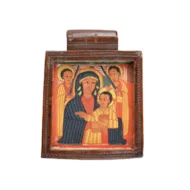
SOLD
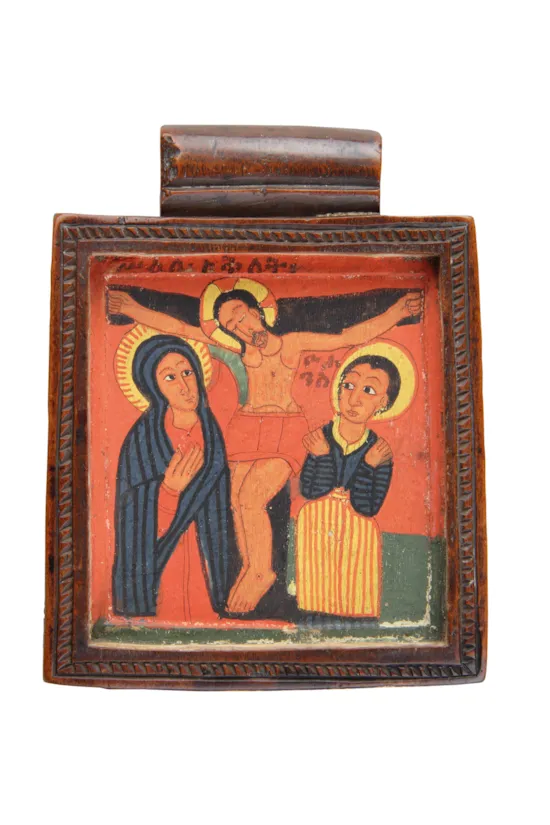
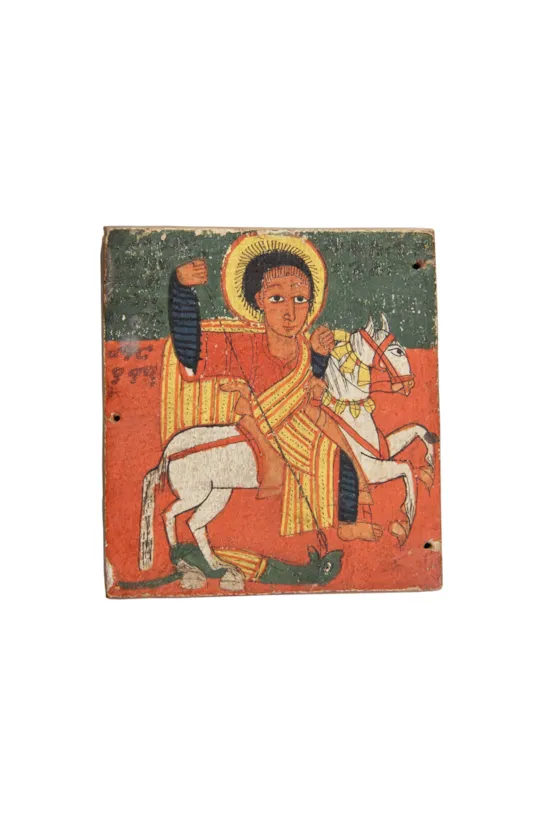
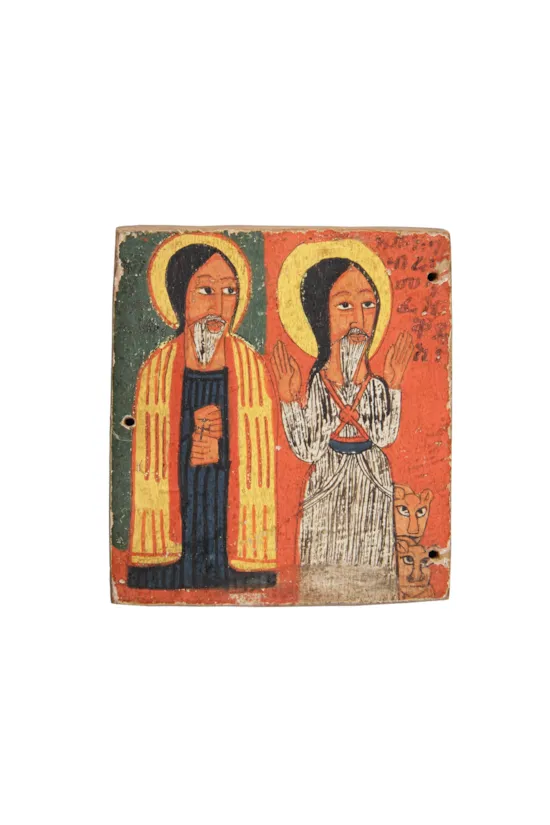
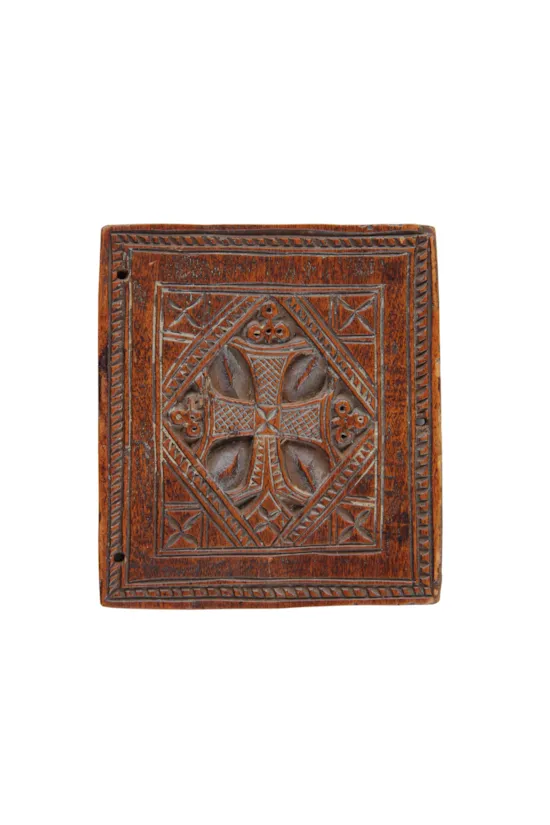
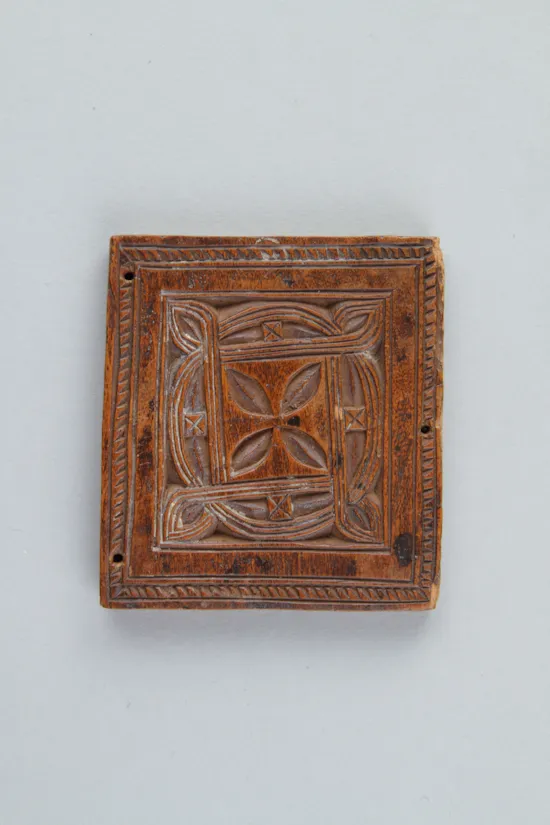
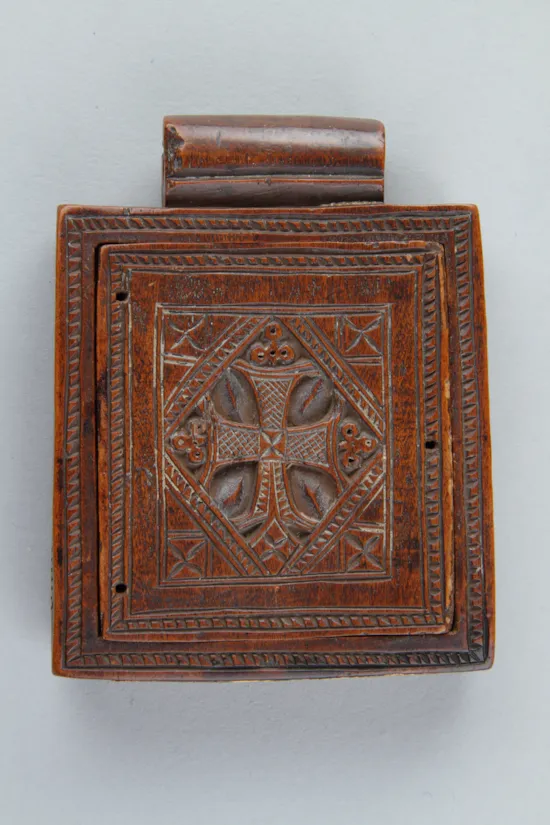
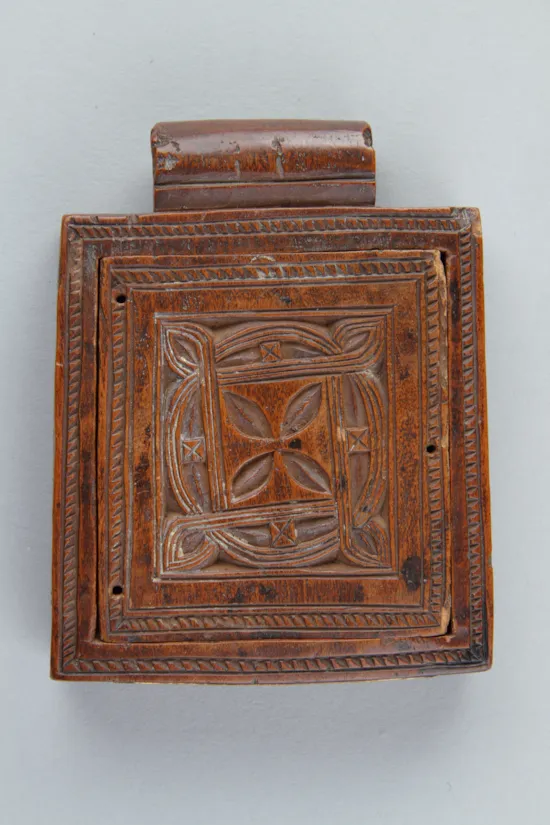

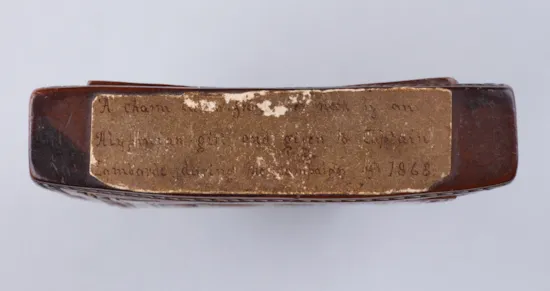
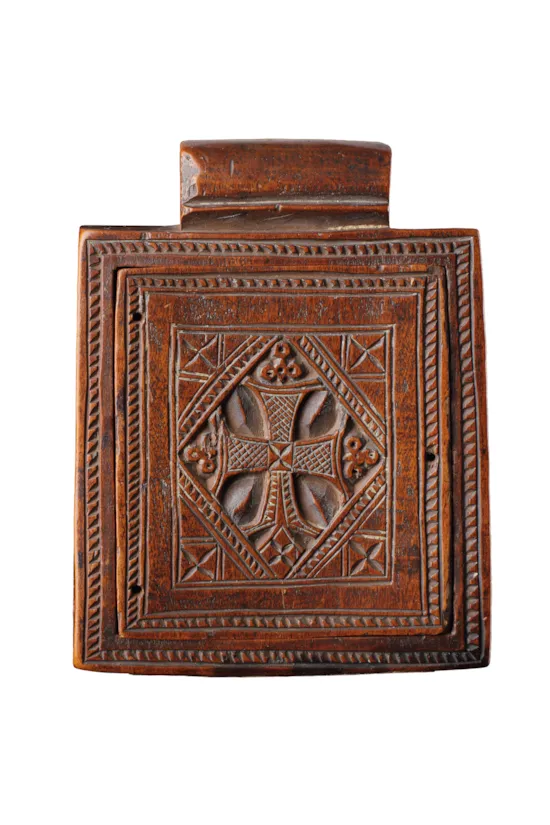












YOU MAY ALSO LIKE


